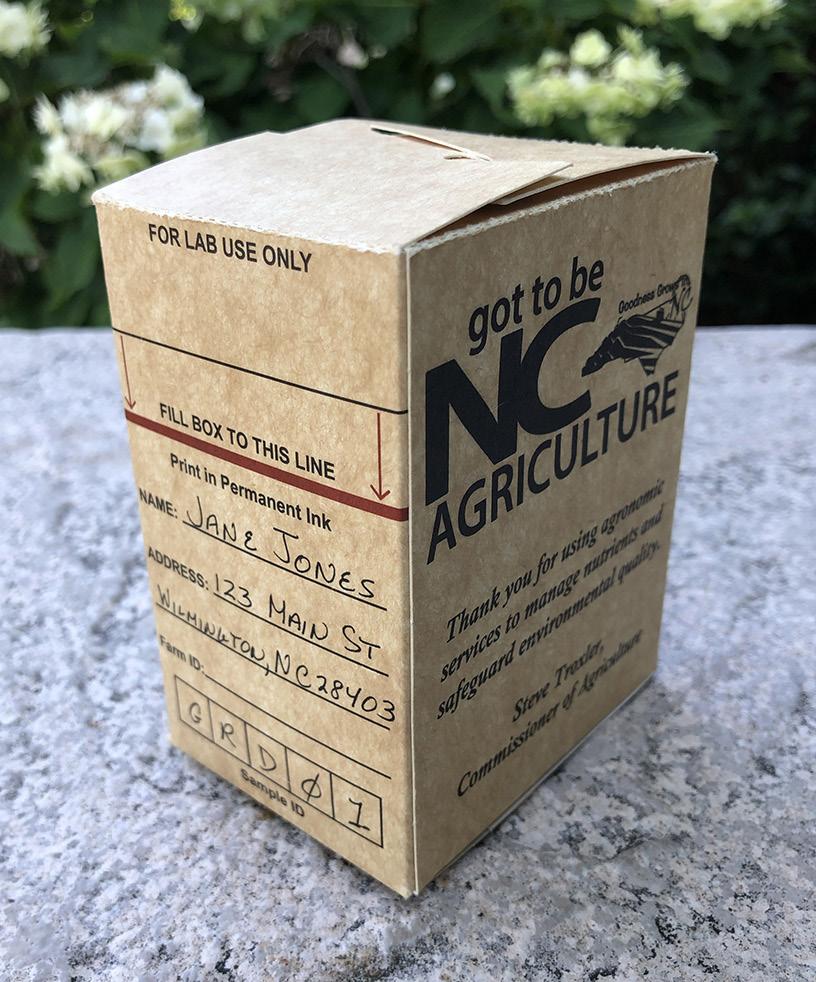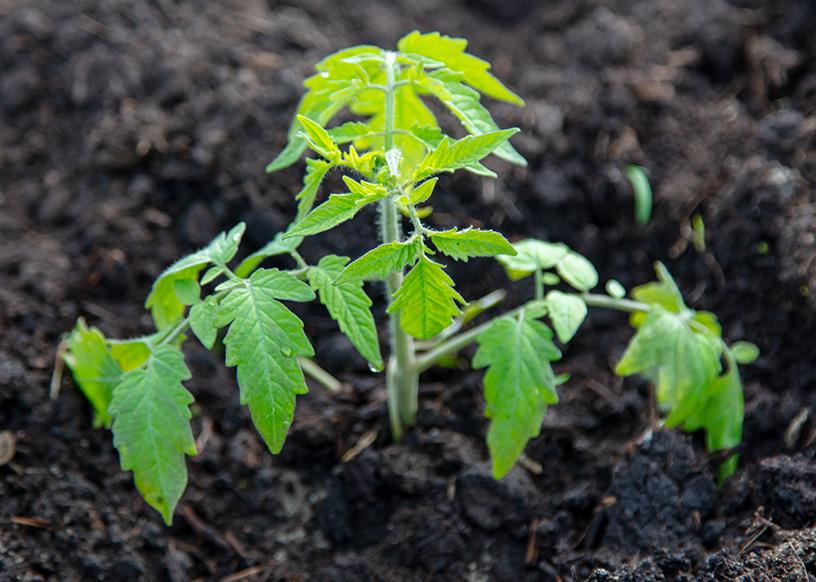
5 minute read
Soil Testing Science Guides Improving Soil to Encourage Plant Health
Soil Testing Science Guides Improving Soil To Encourage Plant Health

Seedlings will be off to a much better start if you take the time to test your soil and amend it based on the needs of the kind of plants you choose.
Adobe stock photo
by Kiley Woods
When spring comes, so do beautiful flowering plants and new green growth, but how can we make sure the soil is of quality to support this plant life? The answer: soil testing. Soil is made up of mineral particles, organic materials, decaying fragments of other plants, air, water and living things constantly mingling beneath our feet. Soil testing is the answer to finding a balance in the dirt.
Soil tests are a useful and effective way to understand the health of the soil in your backyard as well as understanding what kind of plants may be successful in that soil. Any problems that may be affecting the plants can be diagnosed with soil testing and solved by adding something to the soil to improve the balance of the soil.
For example, if you have a bush of azaleas that’s not doing well, it’s possible that your soil is too acidic or not acidic enough. Azaleas flourish in a pH of 5.0 to 5.5 because they prefer high acidification levels. As a result of testing your soil, you can learn what your soil needs to make that patch of yard the best environment that azalea could have. Testing your soil ensures the best environment for successful plant growth and is a good way to understand what kind of plants will do the best in your soil.
Soil tests are used to predict the probability of successful growth for a specific plant. These tests can be used to help understand what may need to be added to the soil to establish a healthy environment for future planting. They can detect specific elements such as phosphorus (P), potassium (K), manganese (Mn), copper (Cu), zinc (Zn) and iron (Fe). Knowing the elements in your soil is an effective way to understand the health of the soil in your backyard as well as understand what kind of plants may be successful in that soil.
Soil testing also measures the soil’s pH—how basic or acidic the soil is. North Carolina’s soil can range from 3.5 (acidic) to 8.0 (basic). Most common plants grow the best in soil with a pH of 5.5 to 6.5. Soil testing assists you in determining how to fix your pH for the plants by telling you the solution to raise or lower the pH. For example, it’s too low, you can add lime to raise the pH levels; soil testing will tell you just how much to add.
If you need to add nutrients to your soil, that can be done naturally or through inorganic fertilizers that can be purchased at your local gardening store. Other materials such as mulch, peat moss, manure, grass or wheat straw can serve as natural remedies. Soil tests will not, however, detect the possibility of diseased soil or poor drainage that can be causing plant growth issues.

Soil samples are submitted in this standardized box, available at any NC Cooperative Extension office. Gardener’s tip: it’s much easier to write on the box while it is still flat, before you fold it into a box.
photo by Valerie Robertson
Collecting samples in your own backyard only takes a few minutes and knowledge gained from the results can decrease the costs of maintaining your lawn, saving you some landscaping expenses. To gather your samples, visit different areas in your yard. These sections may include a vegetable garden, flower bed, back lawn, front lawn or at the base of vegetation. Collect your samples from each section with a stainless steel shovel by digging about six inches deep into the soil. Gather about a cup and a half of soil overall. Sample specific areas separately where plants appear to not be flourishing as well.
Samples can be submitted at any time of year, but should be submitted several weeks before you begin planting. Results are typically made available online within a few weeks. According to the Agronomic Services Division, it currently takes two weeks to process soil samples and two days to process plant samples.
Boxes and forms for sample submission can be found at any Cooperative Extension office in any North Carolina county. You can learn of additional locations for sample boxes from any of these offices, listed below.
Cape Fear Area Cooperative Extension Offices
Brunswick County Cooperative Extension
25 Referendum Drive, Bolivia, NC brunswick.ces.ncsu.edu (910) 253-2610
New Hanover County Cooperative Extension
6206 Oleander Drive, Wilmington, NC newhanover.ces.ncsu.edu (910) 798-7660
Pender County Cooperative Extension
801 So. Walker Street, Burgaw, NC pender.ces.ncsu.edu (910) 259-1235
Completed samples should be mailed to the N.C. Department of Agriculture and Consumer Service’s soil testing lab in Raleigh. You may also drop them off at your local Cooperative Extension office and they will send them to Raleigh for you. Samples submitted between April 1 and the end of November are free. During peak testing season, December 1 through March 31, there is a $4 charge for each sample submitted. North Carolina is one of the only states that does not charge for soil sample analysis during certain months of the year.
When the results are available online, you will receive an email notification. Look out for a message from AGRONOMIC LIMS. For more assistance with soil testing information, help finding testing kits or assistance reading soil test results, contact your local Cooperative Extension office.
Once you understand the make-up of your own soil, you will be able to assess what soil amendments will give your plants the greatest chance for success.
Sources:
union.ces.ncsu.edu/soil-testing-kits/
ncagr.gov/agronomi/pals/ newhanover.ces.ncsu.edu/
ncagr.gov/agronomi/documents/2016HOME
OWNERSOILSAMPLESUBMISSIONSHEETAD15c hw2.pdf
ncagr.gov/agronomi/pdffiles/HomeApr2014.pdf
Kiley Woods is a student at Eckerd College in Florida studying marine biology and creative writing. She attended UNCW for two years and is a contributing writer for Going Green.










